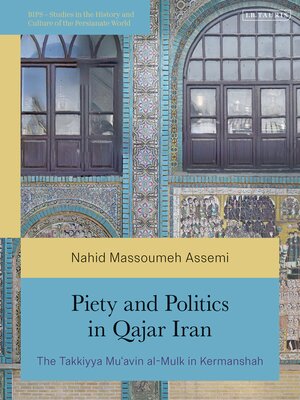Piety and Politics in Qajar Iran
ebook ∣ The Takkiyya Mu'avin al-Mulk in Kermanshah · British Institute of Persian Studies
By Nahid Massoumeh Assemi

Sign up to save your library
With an OverDrive account, you can save your favorite libraries for at-a-glance information about availability. Find out more about OverDrive accounts.
Find this title in Libby, the library reading app by OverDrive.



Search for a digital library with this title
Title found at these libraries:
| Library Name | Distance |
|---|---|
| Loading... |
The Takkiyya Mu'avin al-Mulk is a building complex in the city of Kermanshah in western Iran, dedicated to the annual commemoration of the martyrdom of Husayn ibn 'Ali at the Battle of Karbala in 680, an event of seminal significance to Shi'i Islam. Private takkiyyas built by social elites were a phenomenon of the Qajar period, with their construction motivated by a political quest for legitimacy.
This book examines the intersection of art and architecture, popular piety, and the politics of legitimation. Through an examination of the building and its decorative programme, it addresses issues of patronage, Shi'i iconography and popular religious practices during the early 20th century in Iran. It further argues for the role of takkiyyas in creation of a sense of community and group identity; the formative stage of the emergent idea of nationhood at the time, amongst those who frequented them.
This book examines the intersection of art and architecture, popular piety, and the politics of legitimation. Through an examination of the building and its decorative programme, it addresses issues of patronage, Shi'i iconography and popular religious practices during the early 20th century in Iran. It further argues for the role of takkiyyas in creation of a sense of community and group identity; the formative stage of the emergent idea of nationhood at the time, amongst those who frequented them.







